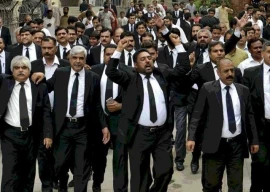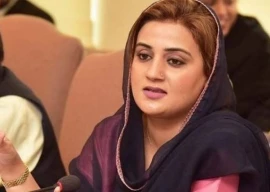
After months of planning, keeping in mind the weather conditions and choosing the best vehicle for the trip, my friends and I got into my Alto VXR 2002 with our bags and sped away. I knew there was a road till Nagar, a fascinating small town, now increasingly under tourist pressure, but I wasn’t quite sure about the road till Qasbo village, the last destination on this side of the border. I didn’t even know whether I would be allowed in the area, a place where only Hindus live.
Yes... there are hundreds of villages in the Pakistani Thar desert where only Hindus or Jains live.
There’s no rocket science involved in going to the Thar desert. However, you will definitely need some money and a lot of willpower. From Karachi, you should go directly to Badin using the National Highway, bypassing Hyderabad. From Badin there is a road that leads to Umerkot and Mithi. From Mithi you go straight to Nagar, the city of the Jains, often referred to as the lost town at the edge of this country. If you’re coming from Lahore, you have to head down to Hyderabad, then to Mirpurkhas and onwards to Umerkot and from there to Nagarparkar.
However, before embarking on your journey to the Thar desert, there are a few things you need to know — tips that might really prove their worth during the trip.
Since there isn’t any CNG station after Mirpurkhas or Badin, or at least there wasn’t one the last time I checked, it is advisable to travel in a car which is loaded on fuel. There is a metalled road from Karachi to Nagar, the last major town of the Thar desert, beyond which lies Indian territory. The actual border post is at Qasbo but there is no road to take you there. The last time I was at Nagar, wanting to go to Qasbo, my camera was confiscated by the paramilitary personnel. If you still manage to take any shots on the way to Qasbo, then you better watch out for intelligence sleuths, who might just whisk you away for good. Locals claim that even their families are not allowed to carry a camera to the village, a fact that I have yet to verify.
After you leave Nagar, you leave civilisation behind — and enter a world mostly untouched by modern gadgets and gizmos.
The drive to Qasbo is difficult due to the wide expanse of sandy terrain — a four-wheel drive is preferable when tussling with the dunes. While driving you may come across farmers using ancient farming techniques. As you slow down to admire the old methods of farming the locals may pause to gawk at your stupidity — the notion of leaving the city to venture out into the barren desert undoubtedly seems insane to them.
Upon arrival you realise that the village has a fascinating aura about it — the atmosphere is clean, the language is crisp and the people are very friendly. The pace of life here is evidently slower; if someone is lying under a tree there, he will perhaps continue to lie there till the end of time — or so it seems.
Poverty in the area is strikingly evident — mud huts with straw roofs dot the land, these dark but cool shelters are all the locals can afford.
Qasbo, as I found out, is a 100 per cent Hindu village with only Muslim soldiers manning the border against the Indians.
The Indians on the other side, and the Pakistani Hindus on this side of the border, look exactly the same; they practice the same religion and prefer to converse in Hindi, Sanskrit or Thari — but not Urdu. They listen to Indian music and Indian radio and adore Indian film stars. Pakistani soldiers manning the border are generally from Punjab. They don’t belong to the region and can’t speak the local dialect which is a major disadvantage for them.
Few Sindhis are in the armed forces and even fewer Tharis ever enlist. A cultural gap is, therefore, inevitable.
There is a temple at Qasbo, the Saldaro temple, remarkable for the simple fact that it sits on the border and has over a 100 peacocks surrounding it, shouting from every direction from among the trees which envelope the place. I was quite impressed by the number and beauty of these blue Indian peacocks, they looked like they belonged there. They shouted, flitted, pecked, and flew away. Hindus venerate them and consider them to be holy — no wonder the peacocks are safe here.
It was rather unfortunate that such beauty could only be seen and not photographed.
With no visual record of this trip to the end of Pakistan, I, along with my weary friends, returned to Nagar. After tending to our stomachs, we headed back to Karachi. In the absence of pictures, as a reminder of my trip, before leaving Qasbo I purchased a beautiful piece of Indian cloth, which was sold to me by a Hindu farmer who had bought it from India. He informed me that before, it was a day’s job to visit India, watch a movie and return by evening but now it was almost impossible to cross the border without being noticed. I reminded this gentleman that just before Eid, thousands of cows are smuggled into the country and the Indian and Pakistani paramilitary forces fail to notice the herd’s tendency to suddenly and spontaneously migrate around that time.
Smuggling is not rampant here like it is on the other end of Pakistan, in Chaman for instance, but it is still present.
Apart from the cows, there is allegedly a more sinister form of smuggling taking place across this border — the trafficking of girls between the ages of 15-25 — they are brought from Bangladesh and the poorer regions of India into Pakistan. They are then allegedly auctioned off to rich Pakistanis and Arabs, or else end up in local brothels. As expected, the gentleman did not elaborate on this snippet and the conversation was left hanging.
After a lassi or a chai, I cannot recall, I left, with a cloth for a souvenir, some fond memories and sadly no visual evidence.
Published in The Express Tribune, Sunday Magazine, August 21st, 2011.
COMMENTS (9)
Comments are moderated and generally will be posted if they are on-topic and not abusive.
For more information, please see our Comments FAQ



1725967717-0/Untitled-design-(3)1725967717-0-165x106.webp)



1730564373-0/Express-Tribune-Web-(19)1730564373-0-270x192.webp)









Thar in general and nangarparkar in particular are one of the best place in world to visit. It was 6 years that i managed to go there during monsoon. And since than i visit thar every year whenever it get rains... I belong to badin which is not far from thar so i go there every year once or twice. And even this year iam planning to go on third day of eid... Everybody must go there during or after rains... Really exciting...
no jean relegoin people now in tharparkar..only hindus ,he belong next...not jean
Nicely written.... For those who feel pity for Hindus living there, You don't need to be, what if whole Pakistan is not secular but Sind surely is <3 !, datx why we are still surviving. Am From Thar, and people give their best efforts to get in a better position here......
As per my information, in 16th century the entire area known today as Thar desert was Jain. The rulers and most of the ruled were Jains. Today, only few Jains remain. Rest of them are Hindus. Almost all the temples found in this region are Jain construction. I have personally never met a Thari professing Jain dharam but I am told that they survive. It is like trying to find a Pakistani Jew.
Jains in Tharparkar? Are you sure about that? Granted that there are some Jain temples in Nagarparkar but they are not in use.
Wow... great article dude... I will try to see the place for myself...
Sometimes i feel sad for those Hindus to be in Pakistan where they can never belong to...